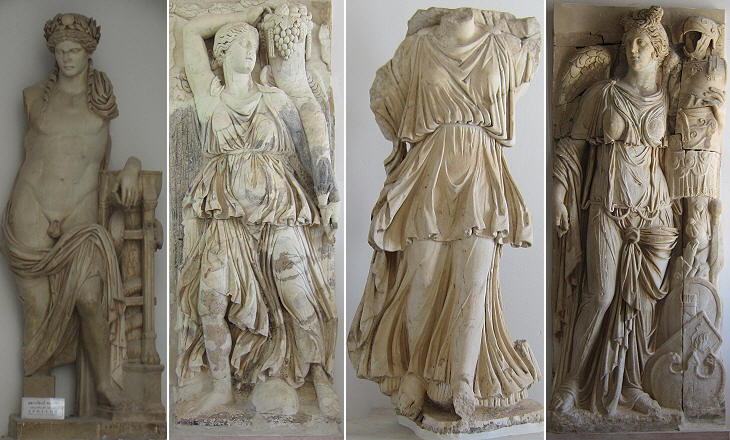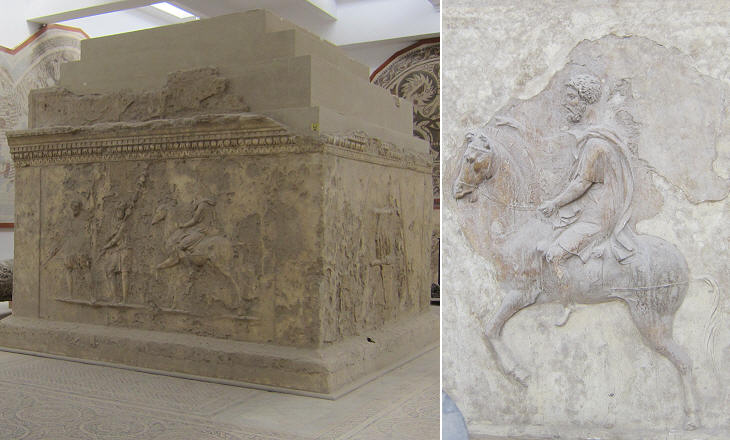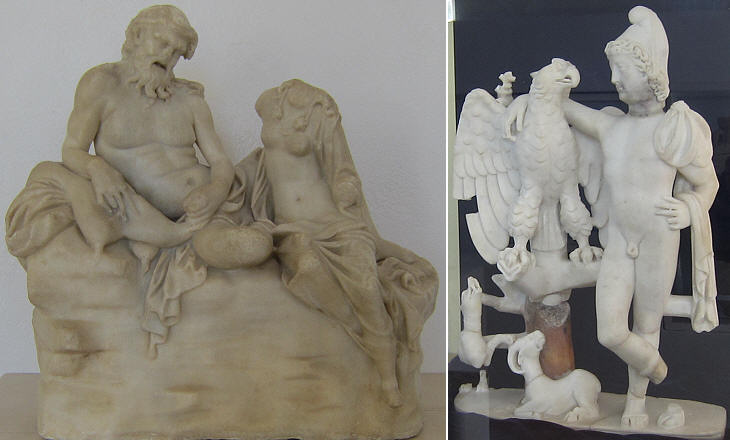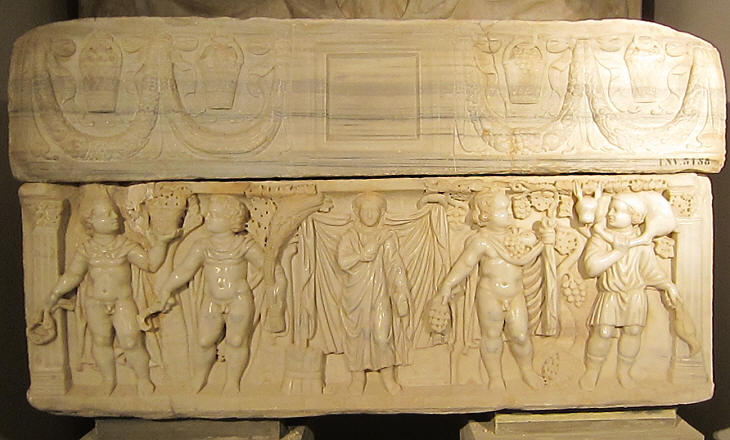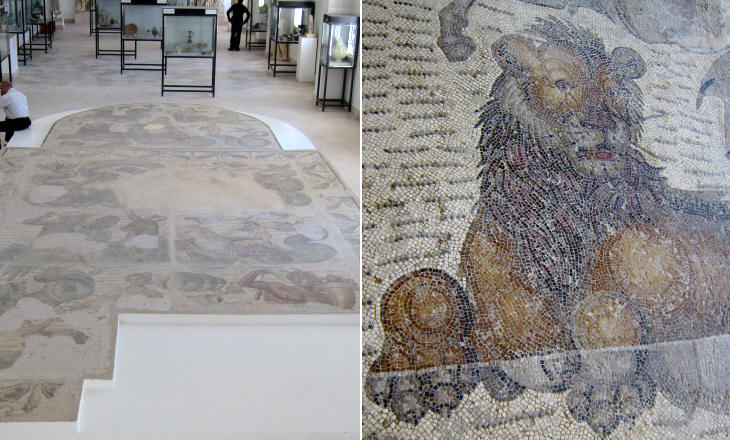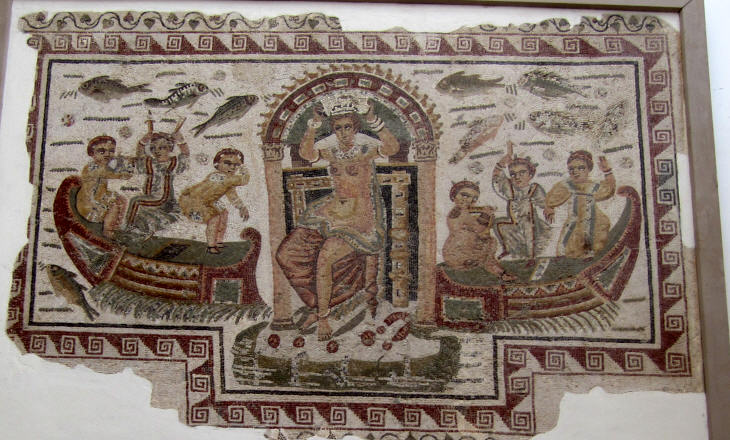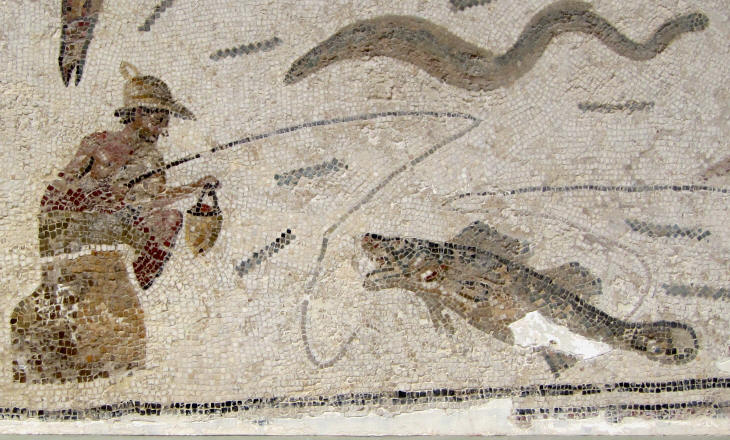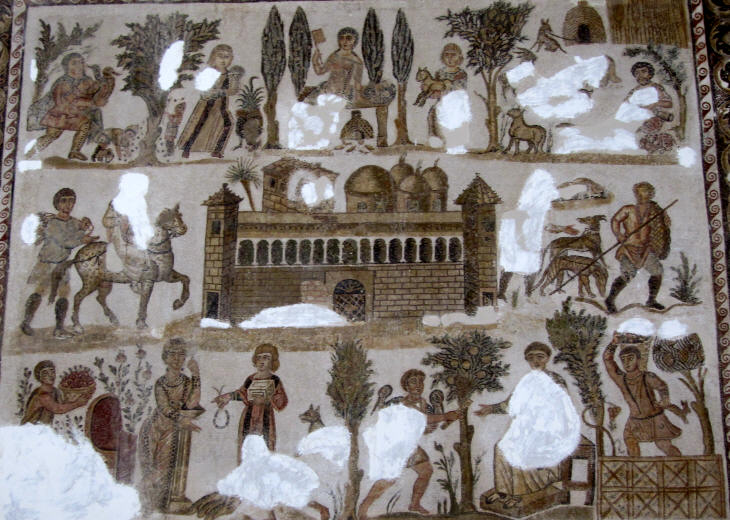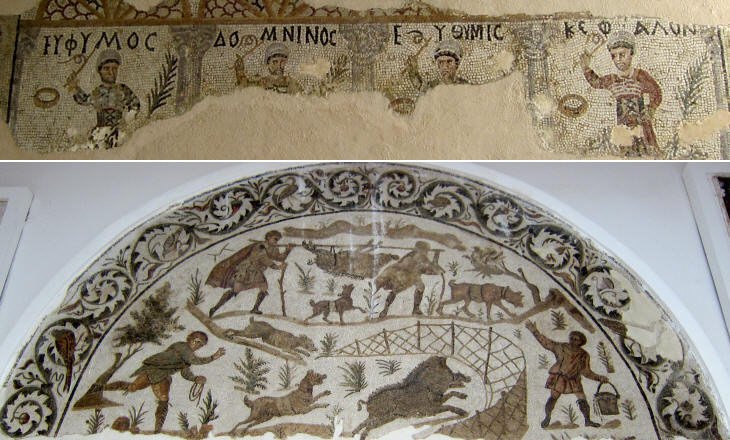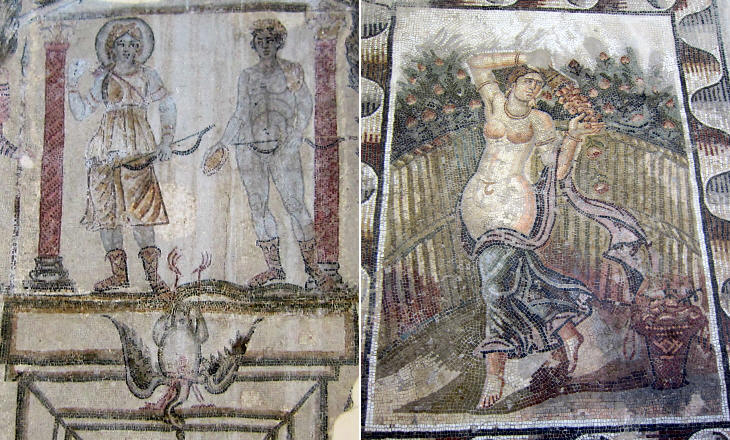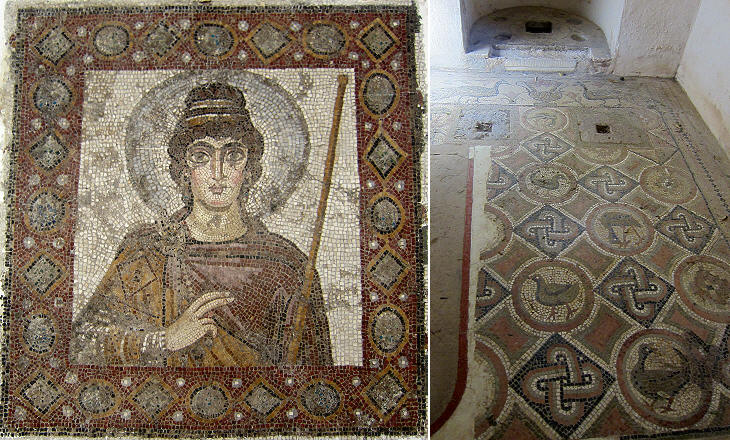  What's New! Detailed Sitemap All images © by Roberto Piperno, owner of the domain. Write to romapip@quipo.it. Text edited by Rosamie Moore. Page added in June 2012. |
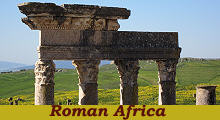 - Carthago (Carthage): Museums - Carthago (Carthage): Museums(detail of the theatre at Thugga) You may wish to see pages on the Punic memories and Roman period of Carthage first. One of the first decisions taken by the French after having established their protectorate over Tunisia in 1881 was to utilize one of the palaces of the beys, the rulers of the country in the name of the Ottoman Sultans, to create a large national museum (Museum of Bardo). At a time when very few travellers visited the interior of the country and local municipalities were not aware of the artistic and historical values of archaeological findings, the decision made sense. Today the fact that such a large part of the national heritage is concentrated in the Museum of Bardo shows the drawbacks of that decision, in particular the removal of mosaics from their original location. In the case of Carthage however, some of the archaeological findings are housed on the acropolis, in a former monastery of French missionaries who promoted the first excavations. In the 1980s a small museum was opened at the foot of the acropolis to house the more recent findings; it is now devoted to the period from the IVth to the VIth century (Palaeo-Christian Museum).
Overall the number of large statues found at Carthage is rather small when compared to other locations of the Roman Empire and considering the prosperity of the city. This is probably due to the very rigorous Christian sect (Donatism) which prevailed in Carthage for a long time. Its members were probably particularly keen on destroying what they regarded as idols, even when the statues did not portray gods. Their action was completed by the Arabs.
A small cemetery discovered in the XIXth century was reserved to members of the Roman administration of Carthage. The presence of horsemen in the decoration was probably an indication of the rank of the dead. In some cases there is a close resemblance to the bronze statue of Emperor Marcus Aurelius in Rome.
The houses of the wealthiest citizens of Carthage were embellished with small statues which came from other parts of the Roman Empire. Afrodisia, a town in Asia Minor, was known as a centre which shipped statues to the four corners of the empire. Scenes related to Dionysiac festivals and hinting at some lasciviousness were very popular and, as in the statue found at Carthage, they did not necessarily portray a specific episode of the Greek myths. When the Christian Emperors forbade the ancient beliefs, the subjects for small statues changed, although they were still linked to the pre-Christian world. The statue of Jupiter and Ganymede is far from clearly stating the relationship between the god and the beautiful teenager. It resembles statues of Orpheus taming the animals, another popular subject during the Late Empire (see that found at Sabratha).
Cremation was the traditional method of corpse disposal at Carthage. Inhumation and the use of sarcophagi were probably introduced in the IIIrd century, but they became standard practice only after the full conversion of the city to Christianity. The sarcophagus shown above portrays the Four Seasons as young men, rather than women as they usually appear in mosaics. The dedicatory inscription was not found, but it is likely that the deceased was a Christian because Winter is portrayed as the Good Shepherd.
Mosaics are by far the most impressive works of art found at Carthage and in general in Tunisia. They are usually very large as they covered the floors of entire courtyards or large halls. Whenever possible, museum curators hang them on the walls, but in some instances even this set up does not allow a proper observation of all details. Marine gods and creatures were by far the most popular subject throughout the whole of the Roman Empire (see those at Antioch), but the number of mosaics found at Carthage is such that the range of subjects is extremely large.
We tend to associate the Classic World with monochromatic art, i.e. with temples and statues of white marble. This was the view of neoclassic art historians, but they were wrong. The ancient monuments, including the Parthenon of Athens were painted with bright colours and the appearance of statues was made more vivid by adding vitreous eyes and bronze and gold garments or weapons. The inhabitants of Roman Carthage had a taste for highly coloured mosaics which put to test the skill of mosaicists. In this mosaic where Venus is portrayed halfway between a Greek goddess and a Byzantine empress, the mosaicist was confronted with a particularly complex scene with six dwarfs amusing Venus.
Sometimes mosaicists best showed their talent in representing ordinary life scenes they knew very well. Rod fishing was most likely a popular pastime even in antiquity. More effective methods for catching fish had already been developed (and they are depicted in many other mosaics). Similar mosaics can be seen at the Museum of Tripoli in Libya.
Some mosaics provide a valuable insight into the society and its economy. Dominus Julius was a rich landowner who lived at Carthage, but the mosaic depicts his farm/countryside residence. He is portrayed sitting in the lower right corner while he receives a message addressed to him. His wife is portrayed opposite him while she is attended by a servant. The large farm was fortified with towers and high walls without openings, an indication that at the time security was a worry. The domes are likely a sign of private baths. The building is surrounded by scenes showing farming and hunting activities in the various periods of the year. With one exception all personages are fully clothed, an indication that classic nakedness was out of fashion. The overall purpose of the mosaic was to show the wealth of Julius in all its facets, including the clothes of his servants.
According to tradition when the Vandals conquered Carthage in 439 the city was not defended because all the soldiers and the inhabitants were watching the races at the hippodrome. Chariot races were popular in Rome, but more so at Constantinople. The chariot drivers portrayed in the mosaic were most likely from that city as their names were written in Greek, something very unusual because in Africa this language was very rarely used in inscriptions. Boar hunting was a popular subject in the decoration of sarcophagi; gods and heroes were portrayed hunting with poles (see a beautiful example at Eleusi), but in this mosaic the focus is on the technique used at the time which was based on dogs and nets.
The same site which housed the boar hunting mosaic had another mosaic with a hunting subject. In this case there was a reference to the Classic World, although the two gods were represented in a rather unusual still posture, as if they were offering the crane as a sacrifice. Diana has a halo around her head which is not part of her traditional iconography. Although the subject of a woman in a rose garden is not directly linked to the Classic World, yet the way the woman is portrayed is full of elegance and movement and it reminds watchers of reliefs at Philippi or even of Botticelli's Primavera - external link.
A total depart from the iconographical patterns of antiquity occurred during the VIth century. Carthage was conquered by the Byzantines in 533. This per se did not have a major impact as the Vandals were unable to oppose the invasion, but in 541-42 a plague almost halved the population of the Byzantine territories. The long Greek-Gothic War (535-53) in Italy deprived Carthage of its traditional markets. The seriousness of the Lady of Carthage, probably a personification of the city, testifies the gravity of the situation. A later mosaic on the floor of a funerary chapel shows an almost naive attempt to portray some birds. Carthage was approaching its final days. Move to: Carthage - Punic Memories Carthage - Roman period Introductory page Bulla Regia Mactaris Musti Neapolis Sicca Veneria Simitthus Sufetula Thuburbo Majus Thugga Thysdrus Uthina Utica Ziqua Mosaics in the Museum of Bardo  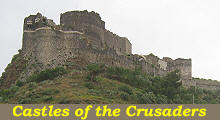 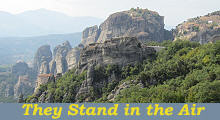 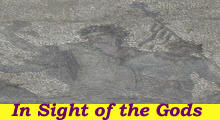
|
